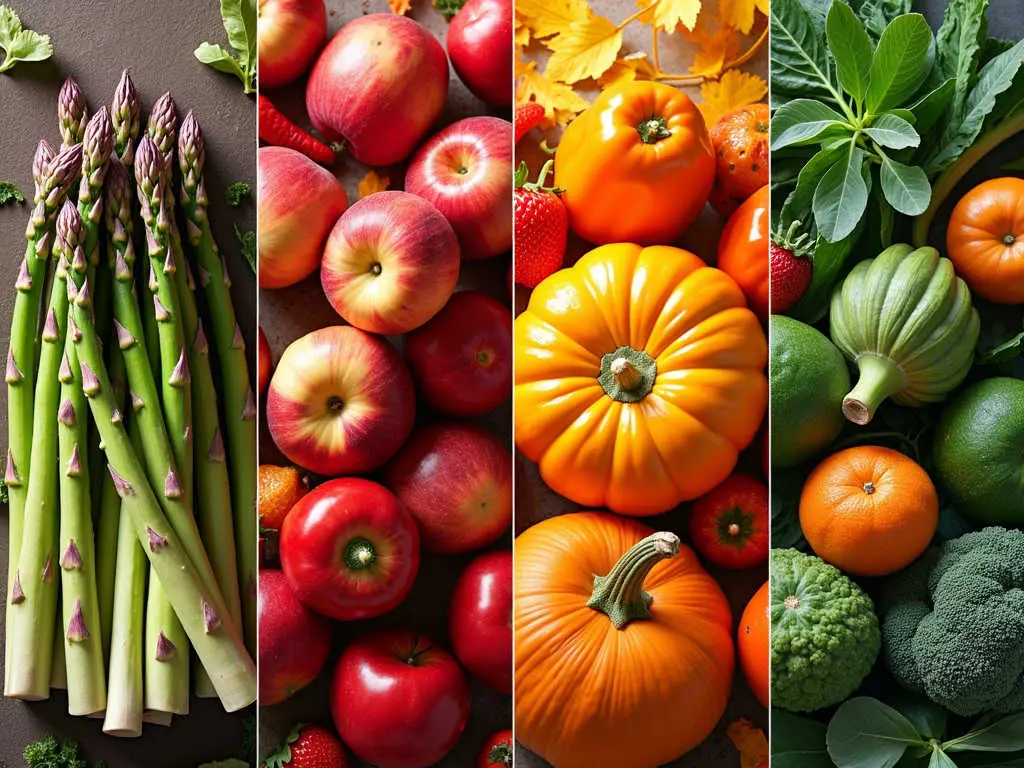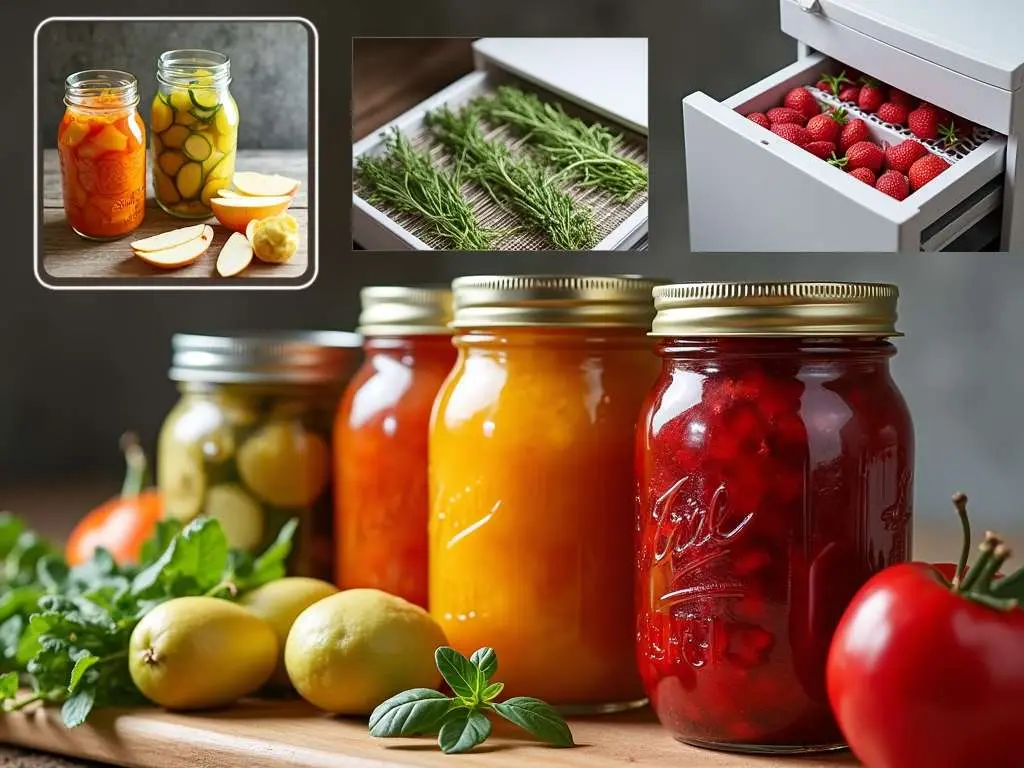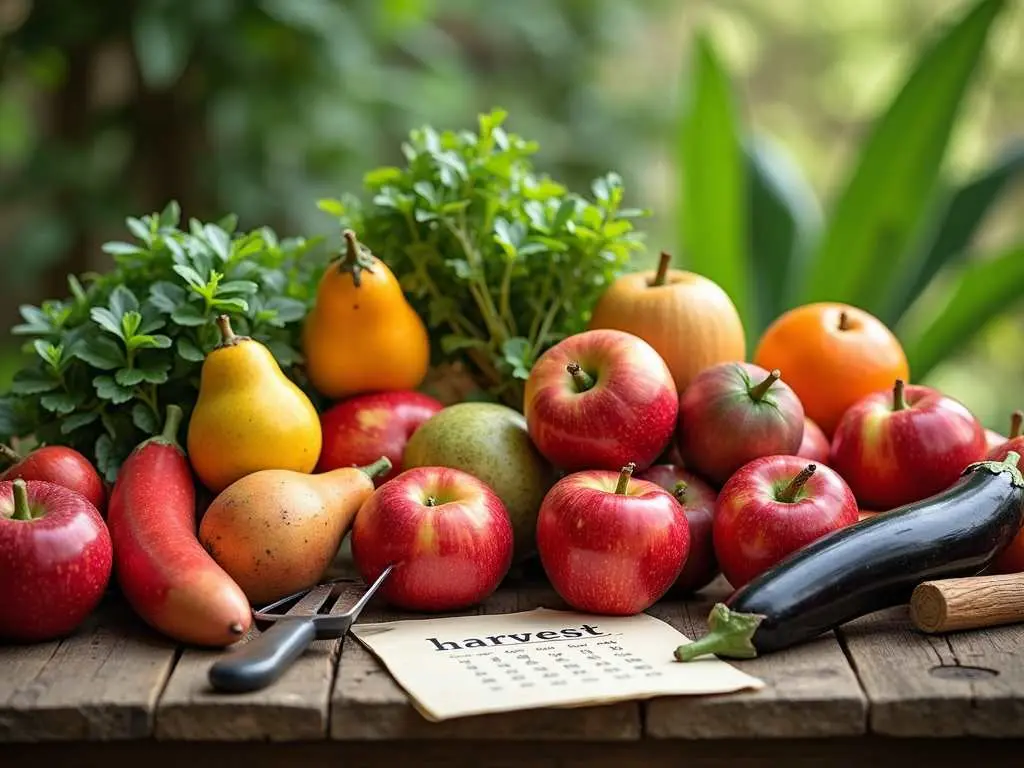As a seasoned horticulturist and agricultural researcher, I’ve dedicated my career to understanding the intricate dance between plants and their environment. My expertise in crop science and sustainable farming practices has been honed through years of field studies and collaborations with leading agricultural institutions. This guide distills that knowledge, offering you a comprehensive roadmap to harvesting at the peak of ripeness.
The Science of Ripeness
Understanding the physiological changes that occur as fruits and vegetables mature is crucial for determining the optimal harvest time. Ripening involves complex biochemical processes that transform starches into sugars, break down cell walls for softening, and produce aromatic compounds that give each fruit its characteristic flavor.
Stages of Ripening
- Maturation: The fruit reaches full size but is not yet ready for consumption.
- Ripening: Flavor develops, texture softens, and color changes occur.
- Senescence: Natural degradation begins, leading to overripeness.
The goal is to harvest at the sweet spot between ripening and senescence, when flavor, texture, and nutritional value are at their peak.
Indicators of Peak Ripeness
Visual Cues
Color changes are often the most obvious sign of ripening. For example:
- Tomatoes transition from green to red
- Bananas develop yellow skin with brown spots
- Peaches and nectarines lose their green undertones
Tactile Tests
Gently pressing the fruit can reveal its ripeness:
- Avocados yield slightly to pressure when ripe
- Pears soften at the neck
- Melons develop a slight give at the blossom end
Aroma
As fruits ripen, they release volatile compounds that produce their characteristic scents:
- Pineapples become fragrant at the base
- Cantaloupe emits a sweet aroma
- Strawberries develop a strong, sweet smell
Optimal Harvest Times for Common Produce
| Produce | Visual Cues | Tactile Test | Other Indicators |
|---|---|---|---|
| Tomatoes | Fully colored | Slight give when pressed | Glossy skin |
| Apples | Full color development | Firm with slight give | Easy separation from tree |
| Peppers | Desired color achieved | Firm and crisp | Glossy skin |
| Melons | Netting fully developed | Slight give at blossom end | Sweet aroma at stem |
| Berries | Full color | Plump and firm | Easy separation from plant |
Seasonal Harvest Guide

Understanding the natural rhythms of produce ripening throughout the year can help you plan your garden and anticipate peak harvest times.
Spring Harvests (March – May)
- Asparagus
- Artichokes
- Peas
- Radishes
- Strawberries (early varieties)
Summer Bounty (June – August)
- Tomatoes
- Peppers
- Cucumbers
- Melons
- Stone fruits (peaches, plums, nectarines)
Fall Abundance (September – November)
- Apples
- Pears
- Pumpkins
- Winter squash
- Root vegetables (carrots, beets, parsnips)
Winter Offerings (December – February)
- Citrus fruits
- Kale
- Brussels sprouts
- Leeks
- Winter squash (stored from fall)
Maximizing Flavor and Nutrition
Harvesting at peak ripeness not only ensures the best flavor but also maximizes nutritional content. Many fruits and vegetables reach their highest levels of vitamins, minerals, and antioxidants just before full ripeness.
Harvesting Techniques for Home Gardeners
Proper harvesting techniques can significantly impact the quality and shelf life of your produce:
- Use clean, sharp tools: This minimizes damage to the plant and fruit.
- Harvest in the morning: Cooler temperatures help preserve freshness.
- Handle with care: Avoid bruising or damaging the skin of fruits and vegetables.
- Cut, don’t pull: For many fruits and vegetables, cutting the stem is gentler than pulling.
- Store immediately: Have a plan for storage or processing right after harvest.
Post-Harvest Handling
Once harvested, proper handling is crucial to maintain quality:
- Cool quickly: Remove field heat to slow ripening and decay.
- Clean gently: Remove dirt without damaging the produce.
Store appropriately: Different produce requires different storage conditions.
The Impact of Climate on Harvest Times
Climate plays a crucial role in determining harvest times. Factors such as temperature, rainfall, and sunlight exposure can accelerate or delay ripening. As a home gardener, it’s essential to:
- Monitor local weather patterns
- Adjust harvest expectations based on seasonal variations
- Use protective measures (like row covers or greenhouses) to extend growing seasons
Preserving the Harvest

When you’ve timed your harvest perfectly, you’ll often find yourself with an abundance of peak-ripe produce. Here are some preservation methods to consider:
- Freezing: Ideal for berries, peas, and corn
- Canning: Great for tomatoes, pickles, and jams
- Dehydrating: Perfect for herbs, apples, and tomatoes
- Fermenting: Excellent for cabbage, cucumbers, and peppers
People Also Ask
Q: How can I tell if a watermelon is ripe without cutting it open?
A: Look for a yellow spot where the watermelon rested on the ground, a dry, curled tendril near the stem, and a deep, hollow sound when tapped.
Q: Is it better to harvest vegetables in the morning or evening?
A: Morning is generally best. Cooler temperatures help maintain freshness, and plants are typically more hydrated in the morning.
Q: Can overripe fruits and vegetables still be used?
A: Yes, many overripe fruits are excellent for baking or making smoothies. Overripe vegetables can often be used in soups or stews.
Conclusion
Mastering the art of harvesting at peak ripeness is a journey that combines science, intuition, and experience. By understanding the signs of ripeness, respecting seasonal rhythms, and employing proper harvesting techniques, you can elevate your home-grown produce to new heights of flavor and nutrition. Remember, nature provides the bounty—our role is to honor it by harvesting at just the right moment.
References
- Kader, A. A. (1999). Fruit maturity, ripening, and quality relationships. Acta Horticulturae, 485, 203-208.
- Lee, S. K., & Kader, A. A. (2000). Preharvest and postharvest factors influencing vitamin C content of horticultural crops. Postharvest Biology and Technology, 20(3), 207-220.
- Moretti, C. L., Mattos, L. M., Calbo, A. G., & Sargent, S. A. (2010). Climate changes and potential impacts on postharvest quality of fruit and vegetable crops: A review. Food Research International, 43(7), 1824-1832.
Disclosure
Our content is reader-supported. This means if you click on some of our links, then we may earn a commission. Commissions do not affect our editor’s opinions or evaluations. Learn more about our editorial process.

About the Editorial Staff
The PeakRipe editorial team comprises a diverse group of experts on nature’s perfect timing across various domains. Culinary innovators and nutritionists, agricultural scientists and cosmetic chemists, artisans and wellness practitioners. All collaborate to create insightful content that explores the full potential of peak ripeness in food, drink, health, beauty, flora, fashion, and art to enhance our daily lives.


